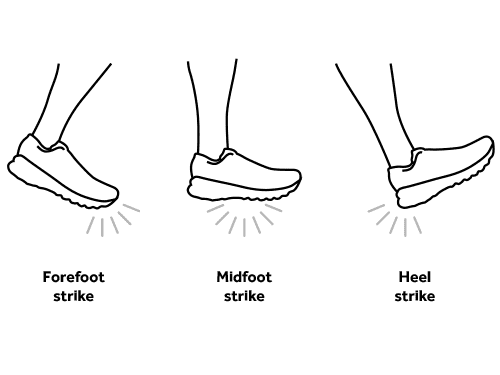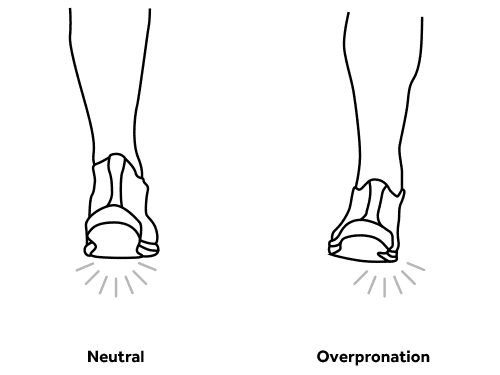So you've just started running? Taking the plunge into a hobby like running is a great way to exercise, as well as de-stress after a long day and enjoy the fresh air. The next step after you've started running is getting into a good routine that will help increase your distance and speed, and improve your running overall. So, how do you create a running training plan that's effective, and what should be involved? What do you need to eat while implementing a running routine and how do you know if your technique is good?
In this second installment of our Beginner's Guide to Running, we are going to be breaking down the steps of how to successfully create a running plan – when to run, what to eat, and how to recognise both good and bad techniques to help prevent injury and keep you on the running path to greatness.
Steps for Building an Effective Running Routine
Building an effective running routine and planning your training is the best way to stick to running. If you have a schedule and know what times of the day you need to run, it can help you feel more motivated to do it.
1. Schedule Your Runs
The first step to building an effective routine is deciding what days you will be running and stick to it. For beginners, it's recommended that you start running around three times per week, depending upon fitness level and current weight. If you are already at a higher fitness level, you can up your runs to four times a week to start with.
Running around three times per week is the best starting point for a new schedule. It allows your body enough time to rest and recover between runs, resulting in far fewer injuries, and will help build your tolerance to the pressure and stress of running. For example, running on Monday, Wednesday, and Friday will help you keep a good schedule, with plenty of rest days in between.
2. Run Time
The second step is deciding how long to run for. Giving yourself a strict time limit will better help you plan out your runs in advance and will allow you to see how much progress you've made – it also helps with sticking to your goal.
For beginners, it's recommended that you begin with a combination of running and walking to help build stamina and endurance – for at least 20 mins and up to 30 mins. Start by running for 30 sec to 1 min and then walking for 1-2 mins and repeat for 20-30 min.

If you're not comfortable with timing your runs on your own, then some other ways to time your runs include:
- Incorporating apps to help time these intervals. An app called 'Couch to 5k' is a great assistive program to help time your intervals and build stamina. It tracks your distance, speed, and calories burnt, as well as tells you when to run and walk.
- A simple timer app, like Tabata, also works well if you don't want to use the 'Couch to 5k' app.
- Try tracking your distance and time using a fitness watch. A watch by Garmin or Fitbit can time your runs so that you can go at your own pace and still be within a certain time frame.
As your fitness and endurance improve, you can gradually increase your run time and decrease your walk time until you can run without stopping. Once you can run without stopping, then you can increase your pace and add in sprints, uphill runs, and heaps of fun running challenges.
3. Keep it Interesting
If you have been keeping to a running schedule for a while now, you're probably finding that your stamina and fitness have increased tremendously. However, you may have also found that your interest in running may have dropped. Keeping yourself motivated and interested is a huge factor in sticking to running. Ways to do this include:
- Don't push yourself if you're feeling overtired or burnt out. It's totally okay to take extra rest days if you need it
- Switch up your days or find a new place to run
- Running with a friend or partner will help you stay accountable and motivated as well as distract you from your surroundings. It will become more of a social outing rather than a strenuous activity

Fueling Up
As any professional athlete is well aware, training can only take you so far when it comes to running performance. To keep improving your speed and endurance, you also need to carefully consider what you're eating. This is where your body is pulling its fuel from and certain foods can help tremendously. Some of these foods include:
- Eggs: Just one egg can meet around 10% of your daily protein needs, super important for recovery
- Bananas: A high-carb energy booster that also contains a healthy dose of potassium
- Almonds: An excellent source of vitamin E – these can also lower cholesterol levels
- Pure Peanut Butter: Offers a good deal of protein for muscle repair and growth
- Oats and Porrdige: High in carbs and fibre, this breakfast option has a low glycaemic index
- Whole Grain Pasta: Boosts glycogen reserves providing the energy you need for distance
- Salmon: This is one of the best sources of omega 3 fats, essential to balance inflammation
- Coffee: High-intensity interval training can be boosted with a cuppa – no milk or sugar
- Avocado: Rich in poly-and monounsaturated fats, these boost your reserves and endurance
The length and type of workout that you're doing will dictate whether or not you need to eat beforehand. If you are only going for a short run, eating beforehand isn't crucial to having a good run. However, if you're running for longer than 30 mins, you may need extra fuel. Nutritional supplements can be useful when running for a long time and can replace lost energy, providing an instant boost to keep you going.
Along with food, your hydration and maintaining a high water intake is crucial for peak performance, muscle recovery, and general wellbeing. It's important to have at least 1-2 glasses before your run and the same afterwards, as during your workout water and electrolytes are lost due to sweat, and the longer you workout, the more water lost.

Proper Run Technique
Having proper running technique is essential to having a good run, preventing injury, and keeping you feeling motivated. Identifying what good and bad running techniques look like will have a huge impact on your body, as well as your speed and overall performance.
1. Did You Say Foot Strike?
If you've done some research about how to start running, then you've probably come across the terms 'landing on your forefoot,' 'mid-foot striking,' or 'heel striking'. These are the three most common ways that people land on their feet while running. It is generally recommended that you land in a mid-foot strike, as this offers a smoother transition in your running stride and is a good compromise between heel and forefoot forces.
However, if you're prone to heel-striking or landing on your front foot, then changing up your natural landing can do more damage than good. As long as how your landing is comfortable for you, then there is no need to switch it up.

2. Pronation
Pronation is the inward rotation of the foot as it hits the ground while walking or running and helps the lower leg absorb impact propelling you forward evenly. Inward rotation, by about 15 degrees is considered normal. Overpronation is when the foot rolls inward more than 15 degrees. The body overcompensates by using the big toe and the second toe as shock absorbers, leading to excess wear and tear on the joints. Over time this can cause injuries like shin splints, bunions, or knee issues.
To see if you're overpronating, grab an old pair of runners or flat shoes. Examine the wear and tear on the soles of the shoes. Do they appear to be wearing on the inside edge? If so, you are overpronating. To stop pronation from happening, it's best to invest in some new shoes designed for people who overpronate. At rebel, our footwear specialists can analyse your pronation and help you choose new running shoes.

3. Running Gait
Your running gait describes the full cycle that your feet take as you run – from landing on the ground to being lifted up and forward as you propel from the ground. The health of your running gait will determine a lot about how you run and how long you can run.
Aim to have the foot land just out in front of the hips with the shin vertical. If the foot is landing too far out in front with the shin at an angle, there will be high levels of ground reaction force slowing you down. This can also cause injury if not corrected quickly, resulting in time off and losing your progress.
4. What To Do With The Rest of Your Body?
So, what are you supposed to do with the rest of your body when you run? Actually, your arms and upper body play a big role in how you run and the quality of your run. Some tips include:
- Maintain good posture as you run. This means a straight back with the natural curvature of the spine. A straight back keeps airways open, allowing breathing to remain easy and unrestricted while running.
- Engage your core, and keep your gaze focused in front of you, not on your feet.
- Try not to let your arms cross in front of your body – instead, keep your hands loose and relax your arms, allowing them to swing parallel to your body.

When it comes to running and having a solid running routine that helps you make progress and keeps your body happy and healthy, the process can seem pretty daunting.
Understanding what steps to take to build a routine, what food you need to eat, and how to maintain good running form is what is going to give you the motivation to stick to running in the long run. Challenge yourself but don't be afraid to take a break if you need it.
Check out the entire range of running gear available from rebel.